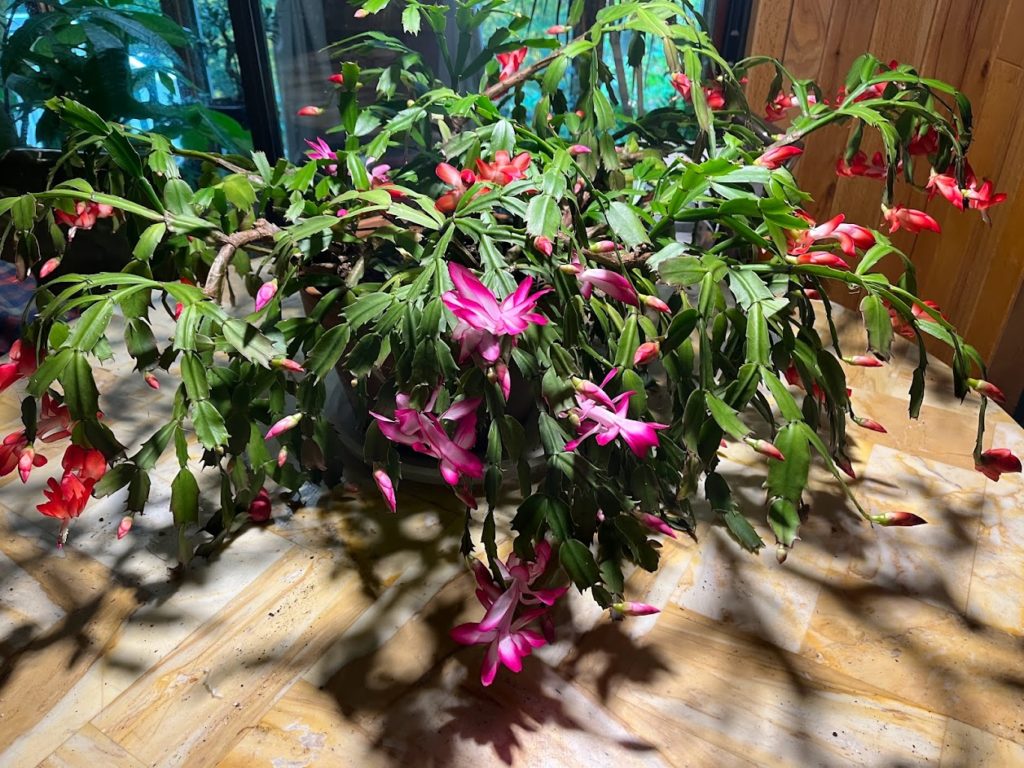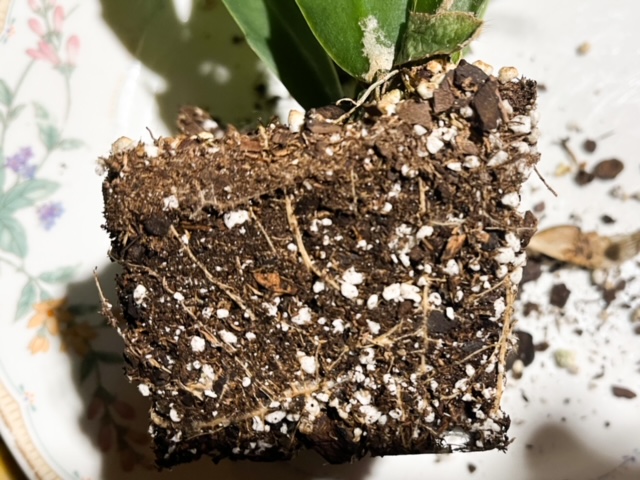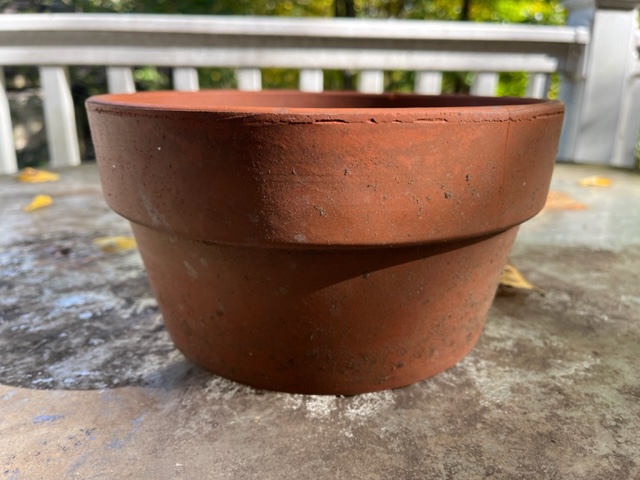
Christmas Cactus Care: Overview
The Christmas cactus is part of an odd group of tree-dwelling cacti native to the rainforests of Brazil. If provided the relatively simple care outlined in this guide, the Christmas cactus’ gorgeous flowers and trailing growth habit will enliven your home every holiday season.
But, before we proceed, the author must stress that Christmas cacti are in fact rainforest plants that live on tree branches. They must be treated as such, and it follows that their care is totally unlike that of the typical desert cactus! Care for them more as you would a typical tropical plant.
Water: How much, and when?
Water your Christmas cactus freely in the spring and summer. Make sure you never allow it to sit in a saucer full of water.
In fall, allow the top 1/4 inch of soil to dry down before watering.
In winter, allow about the top 1/2 to 1 inch of soil to dry before watering.
Light: Where do I put my Christmas Cactus?
Christmas cacti are relatively low light plants and they will bloom reliably in south, east and west windows. A north window may work as well so long as it is unobstructed by trees and buildings.
If you have a light meter, ensure that your plant receives light exceeding 500 foot candles for a period of one to two hours per day in spring and summer.
Christmas cacti fare best when placed outside in the late spring (like your typical tropical plant). Position them so they receive some direct light from the east in the morning or the west in the late afternoon. However, you must ensure your Christmas cacti receive no direct sunlight from roughly 11 AM to 3 PM. Exposing them to direct sun during this time frame will badly scorch your precious plants. Move your Christmas cacti back inside once outdoor nighttime temperatures fall to the mid 50s.
Temperature & Humidity: Is my house warm enough for a cactus?
Christmas cacti are more tolerant of lower temperatures than many house plants. Nighttime temperatures in the mid 40s are acceptable if your plant’s soil is kept relatively dry. However, it is best for beginners to avoid nighttime temperatures below 50F.
Temperatures up to 95F in summer are fine as long as the relative humidity is above 50% and the plant is not over exposed to the sun.
Potting Soil and Container Selection: How do I replant my Christmas cactus?
Christmas cacti have a fine, shallow root system (see below). Mature plants also form ‘aerial’ roots between leaves above the soil line. In their natural habitat, Christmas cacti roots form in pockets of decayed plant matter or moss on the top side of tree limbs. Again, this biological feature of the Christmas cacti will inform our choice of potting soil and container.

Your Christmas cactus will only require repotting once every 2-3 years.
The simplest potting soil for beginners is standard peat and perlite potting mix amended with additional perlite. Use two parts of your favorite bagged mix and one part perlite. The final consistency should be about 60-70% peat and 30-40% perlite. This lightweight and porous mix will prevent your Christmas cacti’s roots from problems associated with overwatering.
It is best for beginners to use a shallow clay pot when repotting Christmas cacti. There are several reasons why a terracotta clay pot that is wider than it’s tall is the ideal container. Firstly, clay pots dry more quickly than plastic ones, reducing the likelihood of overwatering. Secondly, the thick walls of a clay pot insulate plant roots against rapid temperature change. Finally, the heavy weight of a shallow clay pot counteracts the top heavy growth of Christmas cacti. If the above ground portion of your plant is much heavier than it’s pot and potting soil, it can easily tip over.

Fertilizer
Christmas cacti can grow and bloom well with little fertilizer. Use a fertilizer that dissolves in water.
Only fertilize in the late spring and summer months with about 1/4th the recommended rate of a balanced fertilizer. Common products like 20-20-20 or 18-18-20 tomato fertilizer work very well.
Pests and Disease
Christmas cacti are very resistant to plant pests and diseases and shouldn’t require treatment.
Tips and Tricks
After your Christmas cactus stops flowering, remove the dead buds and allow the soil to dry down more than regular. Resume normal watering in springtime.
If you’re using artificial light, make sure to reduce the number of hours of light your Christmas cactus receives starting in fall. It requires short days in winter to flower!!!!!
Add a half teaspoon of Epsom salts per gallon of water if the leaves start turning red.
If you have hard water, add one teaspoon of vinegar per gallon of water every other time you water your plant.
To propagate your plant, follow the guide I wrote for another common houseplant.